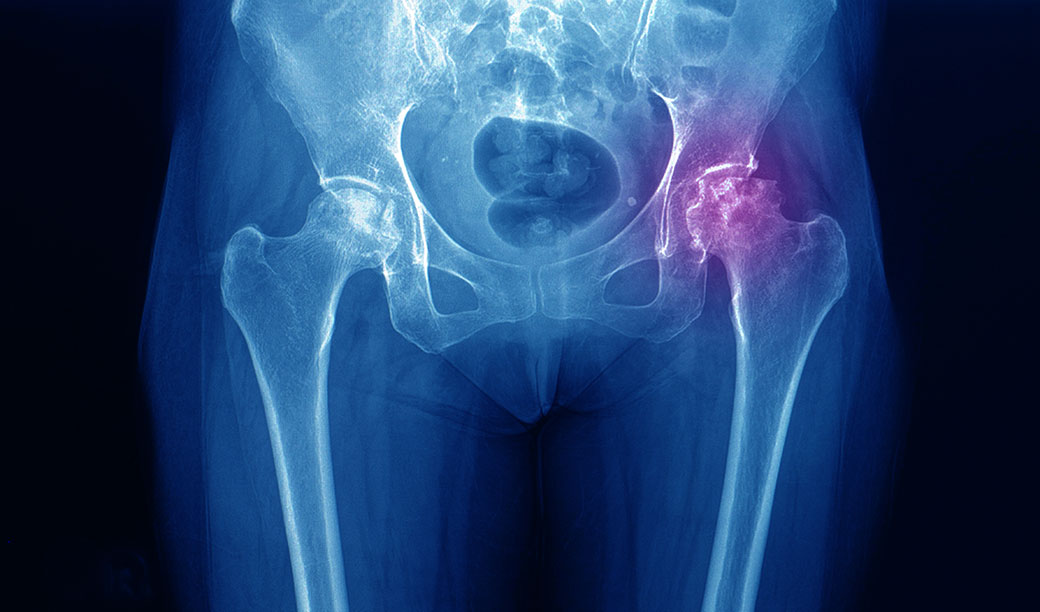
Avascular Necrosis

Overview
Blood carries out necessary components like nutrients and oxygen to bones for them to stay healthy and to be regenerated. Avascular necrosis or osteonecrosis occurs when bone tissue dies from a temporary or permanent shortage of blood supply. This can cause small fractures in the bone and can lead to bone collapsing. When a bone is broken or a joint is dislocated, the blood supply to a portion of the bone is disrupted. If patient has been taking high-dose of steroid medications and extensive amount of alcohol or smoking for long period of time, avascular necrosis could develop. The disease can occur in anybody, although the condition is most likely to occur in adults between 30 and 50 years old. If the condition appears near a joint, the surface around the area may break. It may impact one bone or multiple bones at a time.
Symptoms
In the beginning stage of avascular necrosis, symptom does not tend to appear. As the illness progresses, the joints that are affected will be painful when they are being pressured. Patients will experience pain overtime even when they are lying flat. The level of pain ranges from mild to severe and it gradually increases. Pain that arises from avascular necrosis of the hip may start in the groin, buttocks or thigh areas. In addition to hip, shoulder, knee, hand and foot are the parts that can be affected.
Causes
Disruption of blood flow to bones is the primary cause of avascular necrosis. Shortage of blood supply can be caused by following reasons:
- Trauma. When a bone is broken (into the joint or closed to the joint) or a joint is dislocated it may injure the blood vessels nearby. Hip fractures are common type of trauma that can lead to avascular necrosis. Radiation that is given for cancer treatment can also be a contributing factor that weakens the bones and destroys blood vessels.
- Deposits of fats in blood vessels. Accumulated fats can block small blood vessels and results in reduced blood flow that the bones need.
- Certain diseases. Some medical illnesses like sickle cell anemia and Gaucher’s disease can lead to a shortage of blood supply to the bone.
However, the cause of disrupted blood supply is unknown in around 25 percent of the patients who suffer from avascular necrosis.
Risk factors
- Trauma such as fracture or dislocation of bones can destroy the surrounding blood vessels and diminish the blood supplies to the bones.
- Steroid or high doses of corticosteroids, can result in avascular necrosis.
- Excessive consumption of alcohol or smoking for several years can lead to a buildup of fatty lipids that block the blood vessels.
- Bisphosphonate use may result in the development osteonecrosis of the jaw.
- Certain medical treatments like radiation therapy in cancer patients can make the bones weak. Transplantation of certain organs, especially kidney transplant can be the reason for avascular necrosis to develop.
Several medical conditions can also lead to avascular necrosis such as pancreatitis, diabetes, Gaucher’s disease, HIV, systemic lupus erythematosus, and sickle cell anemia.























